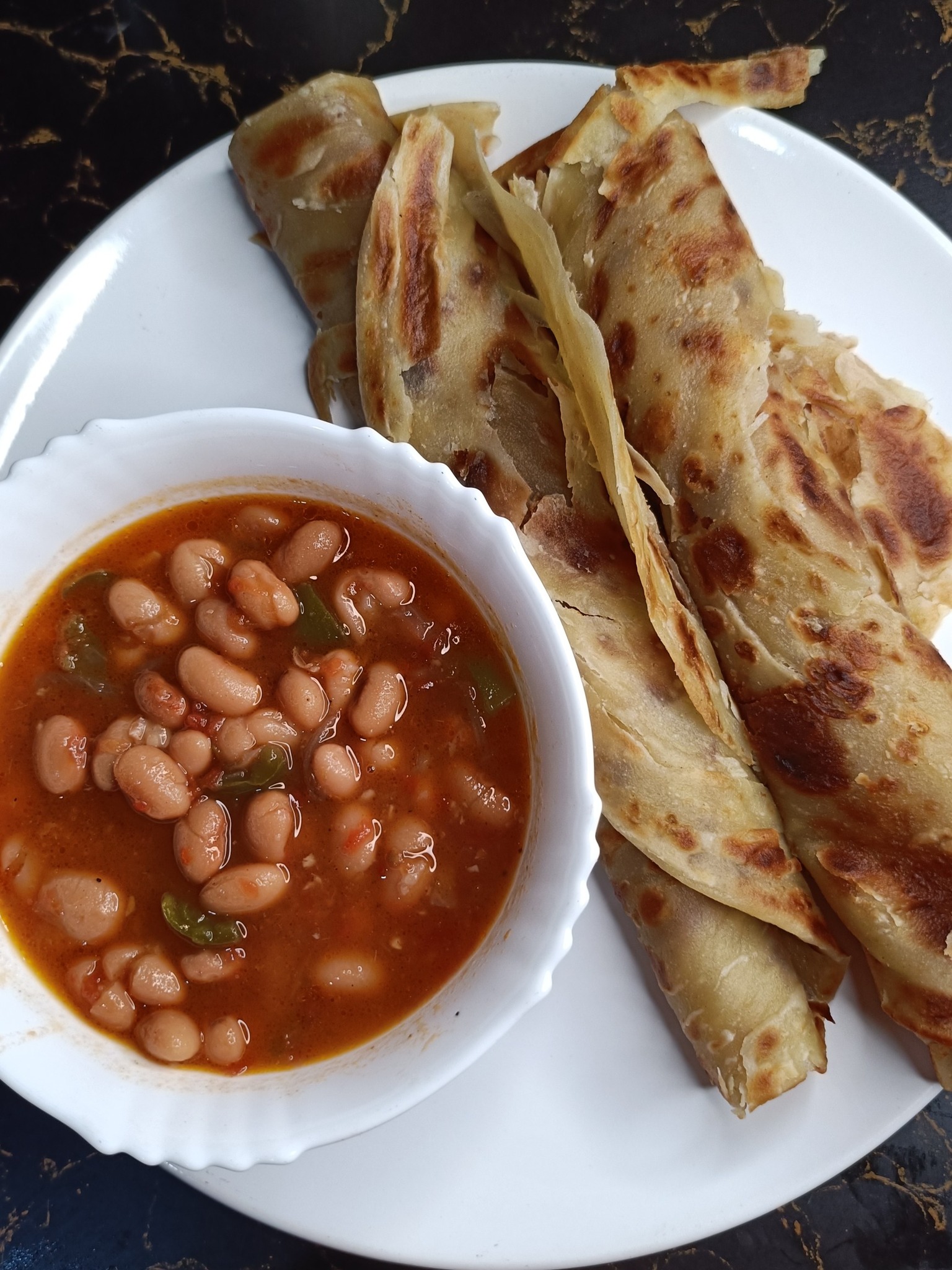ADVERTISEMENT
#### **Ingredients for Chapati**
– **2 cups whole wheat flour**
– **1 teaspoon salt**
– **1 tablespoon vegetable oil**
– **3/4 cup warm water** (or as needed)
– **Butter** (optional, for brushing the chapati)
#### **Method for Preparing Beans**
1. **Soak the Beans**: Begin by washing and soaking the dry beans in water for at least 6 hours or overnight. Soaking the beans helps to reduce cooking time and makes them easier to digest.
2. **Cook the Beans**: Drain and rinse the soaked beans. In a large pot, add the beans and cover them with fresh water. Bring the water to a boil, then reduce the heat and let the beans simmer for about 1-1.5 hours, or until they are tender. You can also use a pressure cooker to speed up the cooking process.
3. **Prepare the Flavor Base**: While the beans are cooking, heat the vegetable oil in a separate pan over medium heat. Add the chopped onions and cook until they become soft and golden brown, about 5-7 minutes.
4. **Add Garlic and Ginger**: Add the minced garlic and grated ginger to the onions and sauté for another 2 minutes until fragrant.
5. **Add Tomatoes and Spices**: Add the chopped tomatoes (or tomato puree) to the pan and cook until the tomatoes break down and form a thick paste, about 10 minutes. Then, add the curry powder (if using), cumin, paprika, and salt to taste. Stir to combine.
6. **Combine the Beans and the Flavor Base**: Once the beans are tender, add them to the onion and tomato mixture. Stir to coat the beans with the spices. Add water or vegetable broth to create a rich sauce. Simmer for an additional 10-15 minutes, allowing the flavors to meld together.
7. **Garnish and Serve**: Garnish the beans with fresh cilantro, if desired, and serve hot with chapati.
#### **Method for Preparing Chapati**
1. **Prepare the Dough**: In a large mixing bowl, combine the whole wheat flour and salt. Add the vegetable oil and mix it into the flour. Gradually add warm water, little by little, and knead the dough until it becomes smooth and elastic. You may need to add more water or flour depending on the consistency of the dough.
2. **Rest the Dough**: Cover the dough with a damp cloth and let it rest for about 20-30 minutes. This helps the dough become more pliable and easier to roll out.
3. **Roll the Dough**: After resting, divide the dough into small balls (about the size of a golf ball). On a lightly floured surface, roll each dough ball into a thin, round disc (about 6-8 inches in diameter).
4. **Cook the Chapati**: Heat a tava (flat griddle) or a non-stick skillet over medium-high heat. Place the rolled-out chapati onto the hot surface and cook for about 1-2 minutes, or until small bubbles form on the surface. Flip the chapati and cook the other side for another 1-2 minutes. You can brush the chapati with a little butter after flipping, if desired.
5. **Serve**: Once cooked, remove the chapati from the pan and stack them. Cover with a clean cloth to keep them warm. Serve the chapati alongside the beans stew.
—
### **Variations of Beans Served with Chapati**
The beauty of **beans served with chapati** lies in its versatility. There are many ways to customize this dish depending on personal preferences and regional variations. Here are a few ideas to elevate your meal:
1. **Add Meat**: While beans alone are nutritious and satisfying, adding some meat, such as **beef**, **chicken**, or **pork**, can make the dish even heartier. You can cook the meat along with the beans or prepare it separately and serve it as a side.
2. **Spicy Beans**: For those who enjoy spice, you can add **green chilies** or **chili powder** to the beans while cooking. This adds heat and depth of flavor to the dish.
3. **Vegetable Additions**: You can also add extra vegetables, such as
**spinach**, **carrots**, or **peas**, to the beans to make the dish even more colorful and nutritious.
4. **Flavored Chapati**: Instead of the traditional chapati, you can make **flavored chapati** by adding **garlic**, **onions**, or **herbs** to the dough. This will give the chapati an extra burst of flavor that complements the beans.
—
### **Conclusion**
**Beans served with chapati** is a dish that reflects the rich cultural heritage and culinary diversity of Kenya. The combination of tender beans in a flavorful stew served with soft, warm chapati makes for a satisfying and nutritious meal that is loved by many across the country. It is a meal that brings people together, whether shared with family, friends, or guests.
This dish not only provides a balanced mix of protein, carbohydrates, and essential nutrients but also carries with it a deep sense of tradition and community. By making this dish at home, you not only get to enjoy a delicious and comforting meal but also connect with a part of Kenya’s culinary heritage.
So, next time you’re looking for a hearty and delicious meal, try preparing **beans served with chapati**. With its rich flavors, satisfying texture, and cultural significance, this dish is sure to become a favorite in your kitchen too.
